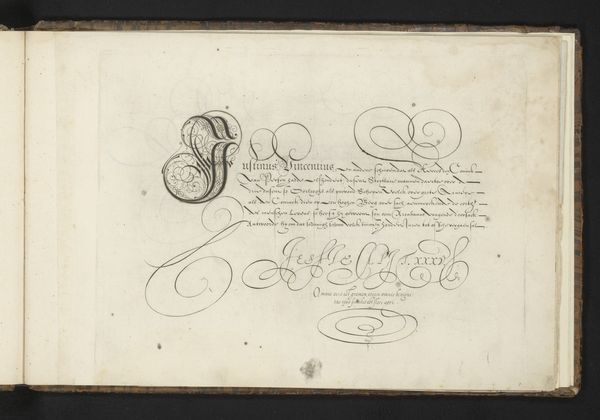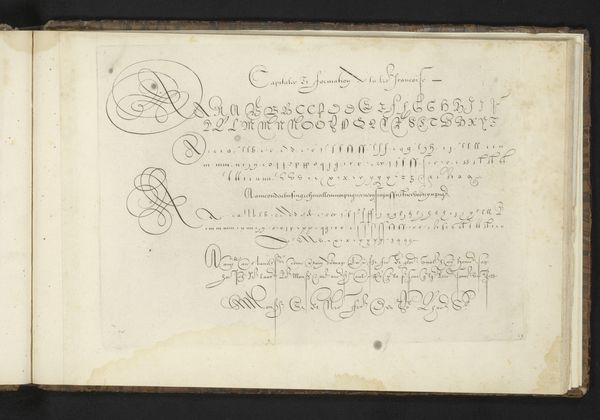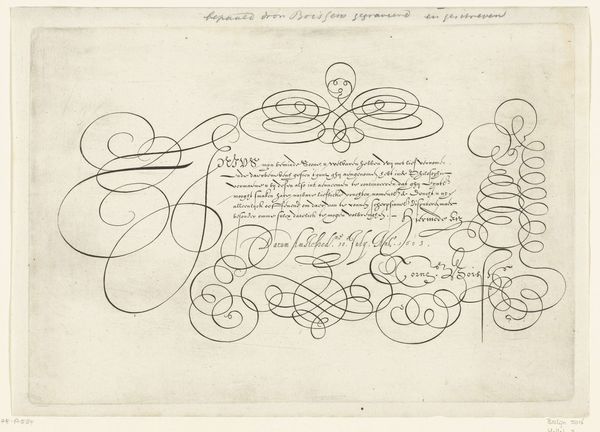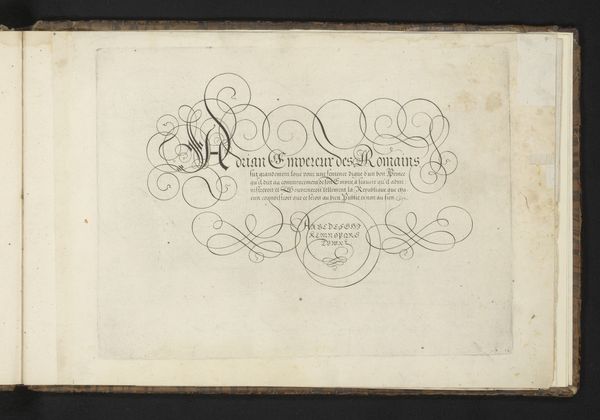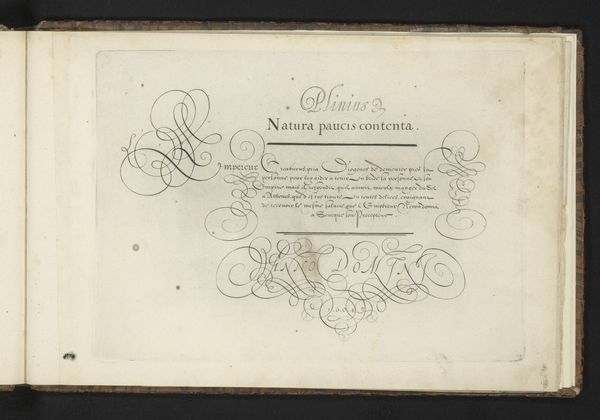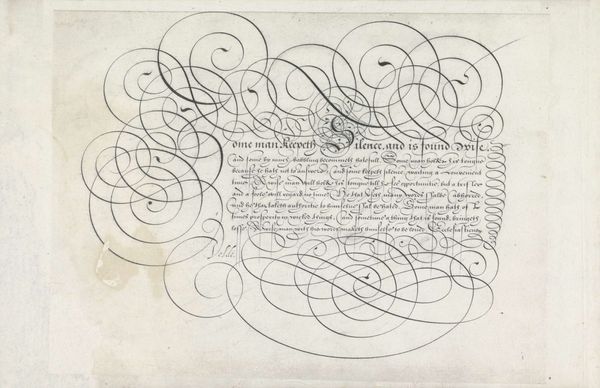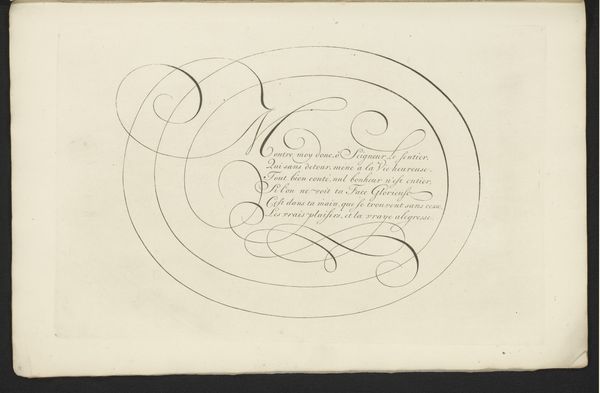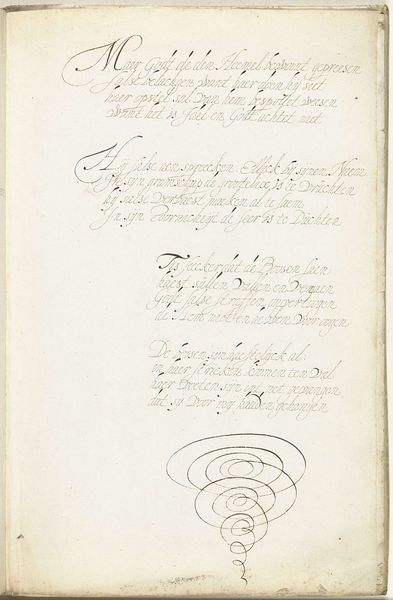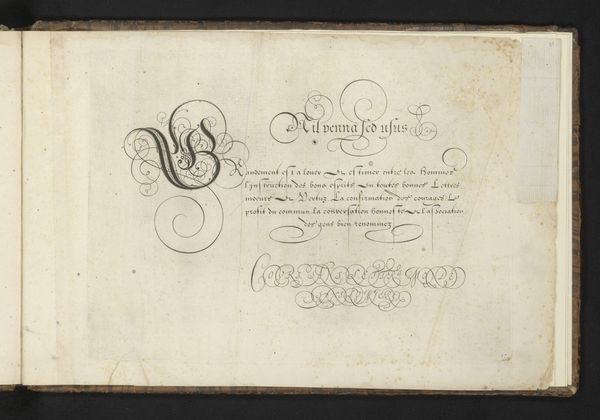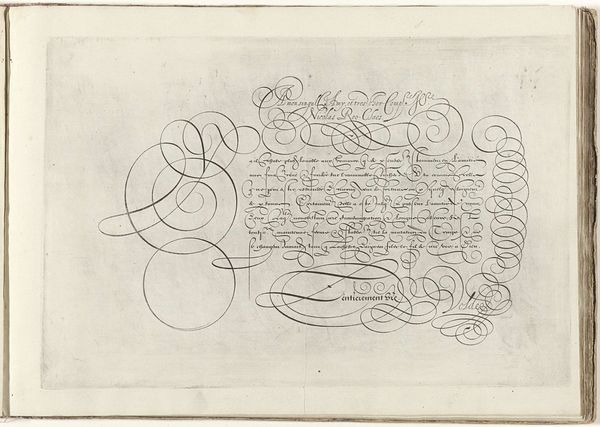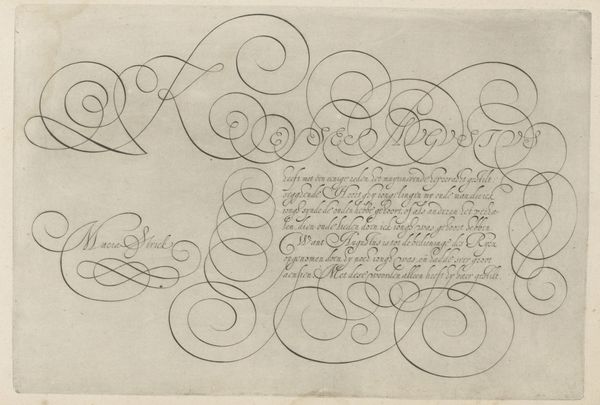
drawing, paper, ink
#
drawing
#
medieval
#
paper
#
personal sketchbook
#
ink
#
calligraphy
Dimensions: height 196 mm, width 268 mm, height 227 mm, width 345 mm
Copyright: Rijks Museum: Open Domain
Curator: Here we have an exquisite example of calligraphy: a drawing on paper, in ink, from 1605, created by Cornelis Dircksz. Boissens. The title is "Schrijfvoorbeeld: Il donne toij mon (...)" which translates roughly to "Writing Sample: He gives you my..." followed by an indecipherable word or phrase. It appears to be part of a personal sketchbook. Editor: My first thought is, there's such delicacy, such restrained elegance here. It feels almost weightless despite being rendered in ink. Those swirling, curling lines... They almost have a musical quality. Curator: Exactly! And consider the sheer skill involved. Before the advent of easily reproducible type, calligraphy was both an art form and a vital means of communication. The ability to write beautifully and legibly was highly valued, demonstrating both literacy and refined artistry. The ink itself, and the paper's production – both would have been significant endeavors. Editor: Yes, there's a deliberate use of ornamentation here. The flourishes and embellishments, don't you think, are more than just decoration? They function as symbols of status, of learning, of membership in a particular social group. Notice the phrase 'Reine de vertu' – Queen of Virtue... Curator: Which leads to an interesting interpretation. Is this just a display of penmanship, or is Boissens also making a statement about societal values? What kind of societal message and impact, if any, was the writing having or expected to have? Who would be seeing this example of their work, and how did it get to that viewer? Editor: Perhaps the act of writing, of crafting these words with such precision and care, becomes a symbol in itself – an emblem of order, of civilization. It would give insight into what was highly praised in the context of the art piece. Curator: Ultimately, pieces like this reveal the intricate relationship between artistry and craft, between self-expression and social expectation. We see the intersection of technical skill, artistic intention, and material conditions within one artwork. Editor: It’s a delicate dance, indeed. And, revisiting the beautiful, spiraling elements throughout the text, I believe that Cornelis Dircksz. Boissens has certainly composed a ballet of visual metaphors, rooted in historical contexts that remain captivating even now.
Comments
No comments
Be the first to comment and join the conversation on the ultimate creative platform.

